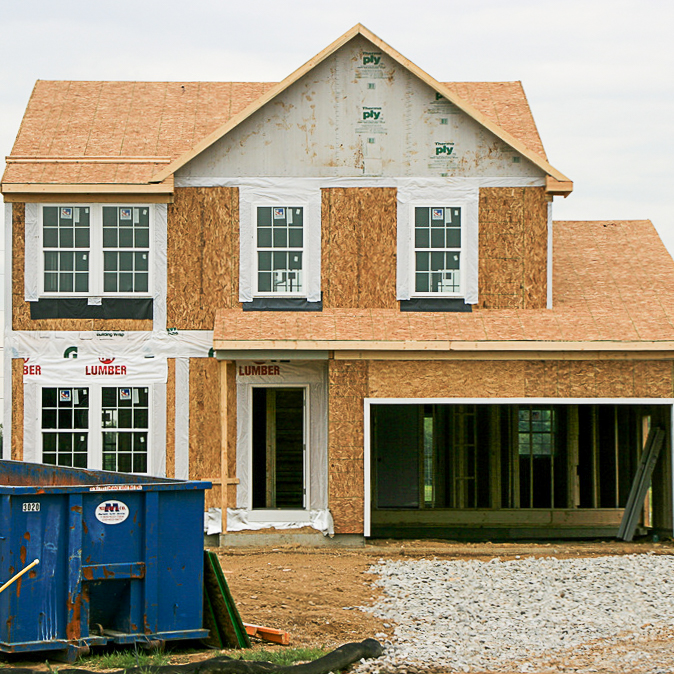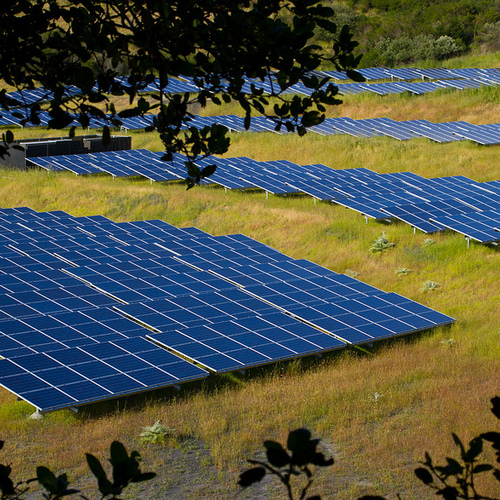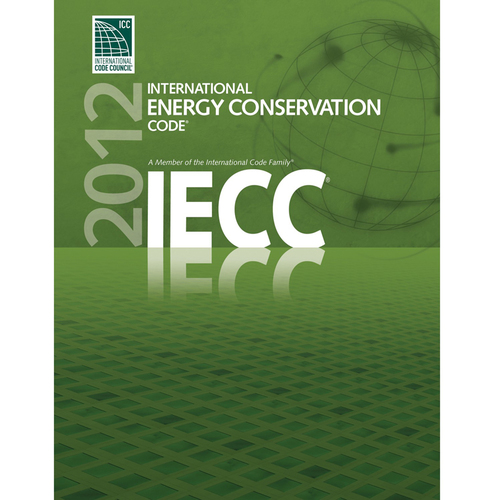
Image Credit: Sarah Miller via Flickr
Last June, the North Carolina agency responsible for making changes in state building codes voted in tougher energy efficiency standards for new residential construction. By December, on the urging of the North Carolina Homebuilders Association, the Building Code Council had reversed course, voting 15-1 to junk some of the changes because they would be too costly.
Using the 2015 version of the International Energy Conservation Code as a starting point, an ad hoc committee deliberated for months on how to tweak the state’s residential building code. The Code Council voted in June to accept the committee’s compromise requiring more insulation and less air leakage in new houses, according to a report posted by Southeast Energy News. The recommended changes were expected to become part of the 2018 North Carolina residential code taking effect in 2019.
Jeff Tiller, a sustainable technology professor at Appalachian State University who helped write the new code as a member of the committee, described the changes as “relatively minor,” and “reasonable.”
But Robert Privott, a lobbyist for the North Carolina Homebuilders Association and also a member of the same committee, proposed in December that the Code Council roll back some of the new requirements, in effect retaining pieces of the 2009 IECC in the next version of the state’s residential code.
The proposal from the homebuilders association eased requirements for U-factors in skylights and lowered code minimum R-values for insulation in ceilings and walls. For example, code changes previously approved by the Code Council would have required wood-framed walls to have R-15 of cavity insulation or R-13 of cavity insulation plus R-2 of continuous insulation in Climate Zone 3. The builders association instead suggested the insulation requirement remain at R-13, according to the agenda for December’s council meeting. The maximum permissible U-factor for skylights in Climate Zone 3 rose from 0.55 to 0.66.
A lost opportunity for consumers
Why take all the time to consider and approve new building codes only to undo most of the work six months later? That was the question from Bridget Herring, a new appointee to the council and the only person to vote against the latest revisions.
“I do not have any questions other than why we would amend the code we just adopted,” she told the Code Council before the vote.
Councilors, however, said it wasn’t unusual to approve a policy with the idea it would be changed later.
“Rather than hold up the whole energy code, we would let something go through, knowing that we were going to revisit it again,” Robbie Davis, the newly elected chairman of the 17-member panel, told Southeast Energy News.
Bill Fay, director of the Energy Efficient Codes Coalition, called the reversal a “slap in [the] face of North Carolina home buyers” and told the Codes Council its decision means that North Carolina is falling behind despite the fact it’s one of the fastest-growing states in the country.
“Why should we let the builders write the code?” Fay asked.
According to the International Code Council, as of July 2017 North Carolina was one of 15 states using the 2009 version of the energy code. Eight states, including North Carolina, have adopted the 2009 International Residential Code. Other states have moved to new versions of the codes published in 2012 and 2015. A number of states have adopted parts of the codes but don’t apply them to all buildings.
A question of cost
David Smith, a builder from Wilmington, North Carolina, and the chairman of the council’s residential committee, said in a telephone call that the changes sought by the builders association affected only a small portion of the new code and that many of the committee’s earlier changes were left intact.
“Cost is always a factor,” he said of more stringent energy requirements for new construction. “The more you increase the cost, the more it affects affordable housing — which is already almost an oxymoron; the cost of housing is out of sight. We try to make sure we keep the cost of housing down as much as possible so more and more families can get into homes. It’s a lot more than ‘I’m against’ or ‘I’m for’ something.”
Smith said that advocates for tougher building requirements played an “extremely important part” in making code revisions, and that he understood their frustration over the council’s most recent vote.
“That upset the proponents of the energy code, and I can understand it because that’s what they do, and thank goodness we have them there. We just can’t do it all. I can build a house right now that wouldn’t cost you hardly anything to heat or cool and could stand up to a hurricane or a tornado, but at what cost do you want to build that home?”
If cost was a chief reason for softening the energy requirements, the council got no specifics in its December deliberations. Code Council Chairman Robbie Davis, a Rocky Mount, North Carolina, builder, said the homebuilders association didn’t say exactly how much it thought the energy upgrades would add to the cost of a new house.
Privott was not available to talk about the changes.
The next round of changes is a long way off
Herring, the energy program coordinator for the city of Asheville, told GBA that the energy code changes that had been approved in June were a compromise between the 2009 IECC on which current North Carolina code is based and the 2015 version of the energy code.
She said the payback from changes approved in June would have justified the investment, and that she considered the rollbacks approved in December a significant change.
“North Carolina has moved from a three-year code cycle to a six-year code cycle, so we are only planning on an update every six years,” she said by telephone. “We are going to fall further behind, and there are going to be larger changes if we don’t take some small steps forward. I would rather take small incremental steps that are cost-effective, and I do believe that was a cost-effective requirement.”
A pending rate increase from Duke Energy is another factor, she said. “Those slight advances in efficiency would have helped offset the cost of our increased utility rates that are potential coming down the line.”
Further tinkering is still possible. The rewritten codes will become the state’s 2018 building codes and go into effect on January 1, 2019. Decisions the council makes now are still subject to review by the North Carolina Legislature, and council rules allow code changes to be proposed at any time.
Weekly Newsletter
Get building science and energy efficiency advice, plus special offers, in your inbox.















5 Comments
An embarrassment to NC
There is continuous posturing here in NC among the home builder lobby to "build affordable." It's a front end argument designed to line their pockets with construction capital while completely avoiding all future homeowner costs in repairs, energy, and health. It's dispicable.
What makes this so insidious is the assumption that only new home buyers need the breaks. How about the piles of existing housing stock with poor insulation, particle board siding, mold-lined polyethelene vapor barriers under the drywall, huge engery bills, and miserably performing doors and windows? Who actually buys all these huge new homes here in NC anyway?! (The median home value here in Cary, NC is $345k while our cost of living is just 94% of the US average.) I'd like to see the code stringency determined by scale--breaks if you're <1,200 SF but the straight 2015 IECC without revisions for anything larger. At some point, the home builders need to step up and take responsibility for the mess they're making.
Sorry. That my state makes national news for shirking the code while reveling in the strength of the economy is an embarrassment. We used to be proud of what we made around here.
Typical Builders
I have seen this not just in NC but in other states, cities and counties. The builders get together and moan and groan about upping the insulation and then the town councils ammend and revise energy codes.
The builders I know personally, make A LOT of money. Easily pulling in six figures per year building homes. So it is very profitable for them.
Once a homes insulation is completed. It is VERY difficult to ever go back and update the insulation. Both in the walls, windows and ceiling. The attic is something one can go back and add more without relatively high costs. The rest is not as easy. So for the life of the home (100 years), the home costs more to heat and cool and is usually not as "healthy" as a well insulated and well sealed home.
In the end, money talks and builders have a lot of power over these codes. Council members depend on permits, new builds and new residents and they don't want to offend and chase off builders so they will capitulate to them. It's the nature of the beast. One can always build above code minimum if you build a custom home. Spec homes, you are stuck with what they built. Custom homes allow an open pallet.
It's sad but it doesn't surprise me.
My two cents.
My guess is that the existing labor pool isn't skilled enough to install exterior insulation on the typical 2x4 16" OC wall. The alternative 2x6 at 24" OC might pose problems for hurricane prone eastern side of the state and 2x6 at 16" OC would just be too expensive not to mention a waste of lumber.
Air sealing is probably more important anyways and the article didn't mention anything about loosening that requirement.
For the record Georgia went through a similar thing this past summer/fall.
Not that the what they have
Not that the what they have done is a good idea, but for some perspective:
https://www.zillow.com/homes/new_homes/globalrelevanceex_sort/35.975228,-81.12236,35.267486,-82.303391_rect/9_zm/0_mmm/
When there are areas in the state that have new construction for under 150k, it does drive affordability considerations
I realized this when I found some really attractive interior doors from a supplier in the midwest. I would have preferred them prehung, but wanted fir jambs to match the house. The sales man responded that they were not available in fir, but that their standard jamb was vinyl wrapped particle board[or maybe MDF ]
After suppressing my gag reflex, I declined and bought them as slabs. My takeaway was that when you are selling a 100k house, you cannot put 100 dollar door frames in it.
anyway,in the land of million dollars is the new normal, a grand of foam is not significant
but when you can buy a real house for less than 50 k......
my thoughts also
I agree with the issue about affordability. As someone who works closely with affordable housing advocates, building codes aren't what's threatening future housing issues, such as sunsetting HUD contracts, gentrification, low income housing tax credits and how they'll be affected by the recently changed tax codes, etc.. Reducing energy code requirements in the name of low income housing is just hostage taking ('you wouldn't want anything to happen to that little affordable housing project, would you?'). The construction lobby is simply looking for an excuse that makes them look altruistic rather than whiney and backwards.
Log in or create an account to post a comment.
Sign up Log in